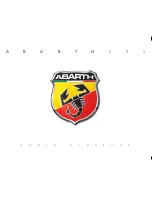
SECTION H -FINAL OPERATIONS -
148
Final adjustments
can be made to effect the "turn-in" of
the car. That is, whether the car has initial understeer or
oversteer. By increasing the rebound control at one end it
will decrease the initial adhesion at that end. Conversely,
decreasing the rebound control increases the initial
adhesion. In general, neutral or slight initial understeer is
most desirable. There should not be a large difference
between transient and final balance, although slightly less
initial understeer will increase responsiveness.
TIRE PRESSURES
Use initial settings (cold) of 28psi front, 26psi rear.
Depending upon tire brand and size, these pressures will be
a reasonable compromise between ride and responsiveness.
Remember, this a light car with large tires. High tire
pressures are not necessary or desirable except for high
speed/competition. Harshness and vibration become a
serious factor at higher pressures. If you are using 17"
wheels with very low profile tires check the manufacturer’s
recommendations.
Steady state under/oversteer may be adjusted significantly
by working with the tire pressures. If your balance is
incorrect, raise the pressures on the axle your want to stick
better by about 2 psi and road test the car. You may,
alternately, reduce the pressures on the opposite axle for a
better ride. Generally, it is the difference in front and rear
tire pressure that determines handling balance. If the car
does not behave the same cornering right and left, check
that the anti-sway bar links are not preloaded, and that the
spring preload follows the preload specifications on page
54.
BRAKE BALANCE ADJUSTMENT
Do not change the brake bias until after the brakes have
been thoroughly bedded in. The factor- set bias will be fine
for most applications. Changes may be necessary because of
strange pad material and/or different calipers, but
none of
the available E.R.A. options require major changes
.
First, check that your link length is correct. See page 104.
Note that the brake balance bar must be set up on an angle
as shown below. This is required because the front calipers
require about three times the brake fluid volume as the rear.
Generally, on a road with good traction,
the front brakes
should lock slightly before the rears
.
Front-to-rear bias
is
adjusted by changing the spacers on
either side of the brake pedal lower balance bar bearing.
Retain the
total
number of the spacers, shifting them from
one side of the balance bar to the other. Standard spacing
is an equal number of washers on either side of the balance
bearing. If you have special calipers and require more
change than is available at the balance bar, new master
cylinders are available in diameters from
5
/
8
" to 1".
Summary of Contents for 427 ROADSTER
Page 4: ...SECTION A PARTS NEEDED 4...
Page 13: ...SECTION A PARTS NEEDED 13...
Page 55: ...55 SECTION C CHASSIS PREPARATION Assembling the chassis and preparation for paint...
Page 56: ...56...
Page 70: ...70 SECTION E BODY PREPARATION...
Page 73: ...SECTION E BODY PREPARATION 73...
Page 76: ...SECTION E BODY PREPARATION 76 ebod stripe...
Page 95: ...95 SECTION F SUSPENSION ASSEMBLY...
Page 107: ...107 SECTION G BODY INTERIOR...
Page 117: ...SECTION G BODY INTERIOR 117 eint tunnel...
Page 142: ...142 SECTION H FINAL OPERATIONS...
















































